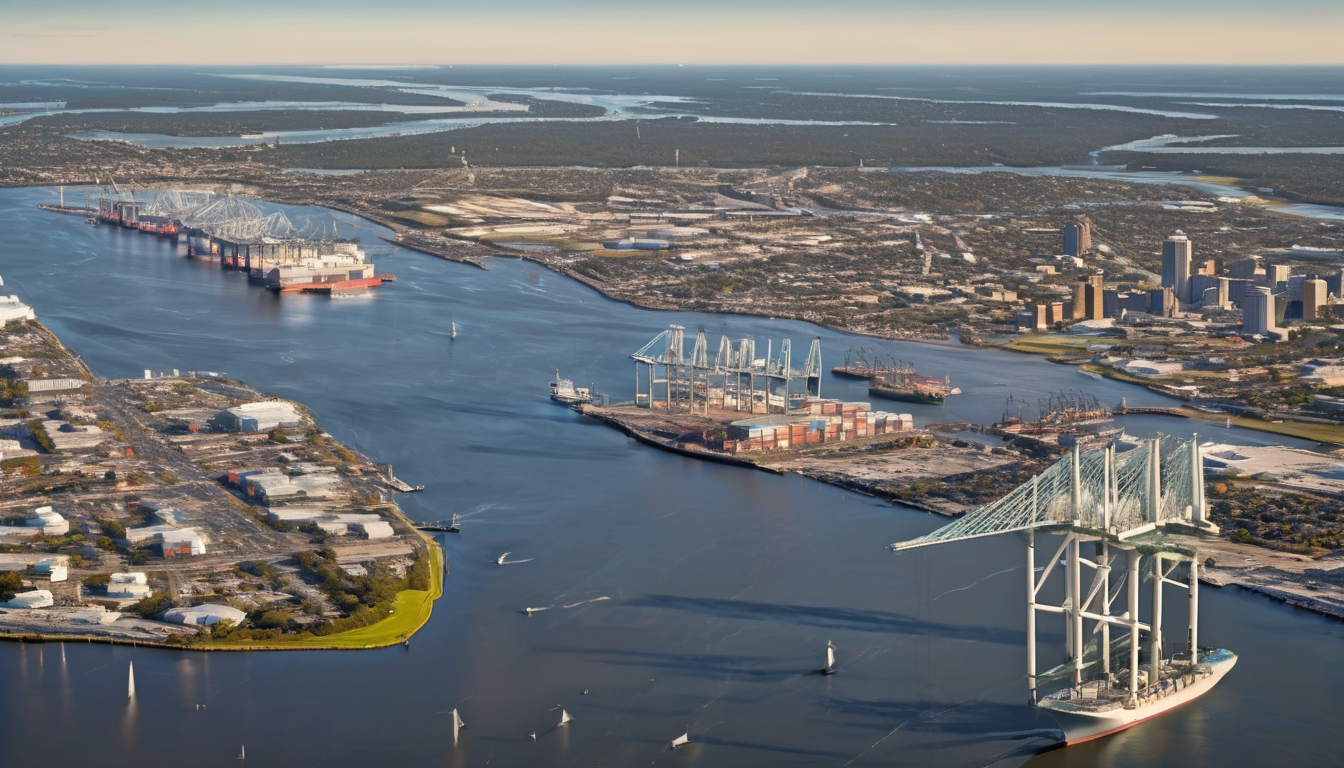
Charleston Market Report Charleston economic trends 2025 are being defined by booming population growth, strategic port investments, and fast-changing housing and labor markets that are reshaping how residents live, work, and do business across the region.
Strong in‑migration continues to drive Charleston’s expansion. New residents arrive from higher‑cost states, attracted by coastal lifestyle, job prospects, and relative affordability. These charleston economic trends 2025 are adding pressure on housing, transportation, and local services.
However, population growth is not evenly distributed. Suburban areas in Berkeley and Dorchester counties grow faster than the historic peninsula. As a result, commuting patterns shift, creating new hubs of retail, healthcare, and logistics around major interchanges and industrial parks.
On the other hand, long‑time residents feel the impact through rising property values and shifting neighborhood identities. Local leaders must balance growth with preservation, infrastructure, and social equity to keep the region livable.
The Port of Charleston remains a core driver of charleston economic trends 2025. Deepening projects, new terminals, and logistics parks help the region compete for global trade flows. Larger container ships and more frequent routes strengthen Charleston’s role in East Coast supply chains.
In addition, warehouse and distribution facilities continue to multiply along major corridors. This logistics boom generates stable, mid‑skill jobs and supports sectors such as trucking, maintenance, and industrial services. Therefore, the port’s performance directly influences employment and tax revenues.
Read More: How U.S. port investments are reshaping regional logistics and job creation
Nevertheless, local infrastructure faces strain from heavy truck traffic and rail congestion. Investments in road widening, overpasses, and smart‑traffic solutions are becoming essential to sustain these charleston economic trends 2025 without eroding quality of life.
Tourism remains a pillar of charleston economic trends 2025, but visitor expectations are changing. Travelers increasingly seek authentic experiences, culinary tourism, and cultural events rather than short, transactional stays.
As a result, boutique hotels, short‑term rentals, and high‑end restaurants capture more spending. Meanwhile, traditional mid‑scale properties must innovate with packages, partnerships, and improved digital marketing to stay competitive.
Seasonality also evolves. Remote workers and “workcation” visitors extend stays beyond weekends, supporting a more stable demand curve. However, this dynamic raises questions about housing supply as more residential units convert to temporary lodging.
Rising costs define many charleston economic trends 2025, and housing is at the center. Home prices and rents have climbed faster than local wages, especially for service workers and young professionals.
New construction focuses heavily on upscale units and master‑planned communities. Even so, demand still outpaces supply near job centers and historic districts. Consequently, workers often move farther from the core, increasing commute times and transportation expenses.
Local governments explore inclusionary zoning, incentives for workforce housing, and adaptive reuse of older properties. These measures aim to keep essential workers—teachers, nurses, hospitality staff—within reach of their employers and urban amenities.
The labor market sits at the heart of charleston economic trends 2025. Unemployment remains relatively low, yet employers report persistent challenges hiring for healthcare, construction, logistics, and advanced manufacturing roles.
In addition, wage competition intensifies. Employers raise pay and enhance benefits to attract talent in a tight market. Flexible schedules, hybrid work, and training programs become key differentiators for both white‑collar and blue‑collar positions.
Local colleges, technical schools, and workforce boards respond with targeted programs in port logistics, cybersecurity, automotive technology, and healthcare support. As a result, skills pipelines grow more aligned with regional industry needs.
Entrepreneurship plays a growing role in charleston economic trends 2025. Co‑working spaces, incubators, and downtown innovation hubs nurture startups in software, digital marketing, and creative services.
Meanwhile, traditional small businesses—restaurants, boutiques, repair shops—face higher operating costs, from rent to insurance. Even so, strong tourist traffic and population growth create opportunities for niche services and hyper‑local brands.
Access to capital remains a challenge for many founders. Therefore, regional banks, angel investors, and public‑private partnerships are vital to financing expansion, especially in under‑served communities.
Manufacturing continues to anchor several charleston economic trends 2025, particularly in aerospace, automotive, and advanced materials. Large employers and their suppliers support thousands of high‑skill jobs and drive exports.
Automation and robotics adoption increases productivity and safety. However, these technologies also demand new technical skills and ongoing training. Workers who adapt gain access to better pay and more stable careers.
On the other hand, global supply chain volatility and trade policies still pose risks. Diversifying suppliers, building local inventory buffers, and investing in digital supply‑chain tools help manufacturers manage uncertainty.
Rising sea levels and more intense storms are now inseparable from charleston economic trends 2025. Flood mitigation, drainage upgrades, and resilient construction standards shift from optional projects to economic necessities.
Major public investments in seawalls, pump stations, and green infrastructure support long‑term property values and business continuity. In addition, resilience planning influences insurance premiums, lending decisions, and investor confidence.
Private developers increasingly integrate elevation, flood‑proofing, and energy‑efficient systems into new projects. As a result, climate resilience becomes both a risk‑management tool and a competitive advantage.
Digital adoption accelerates across sectors and reinforces charleston economic trends 2025. Local firms modernize their websites, payment systems, and online booking tools to capture mobile‑first customers.
Remote and hybrid work patterns bring higher‑income residents whose employers are based elsewhere. Their spending supports restaurants, wellness services, and local retail, even when corporate offices remain outside the region.
After that, demand grows for better broadband coverage in suburban and rural pockets. Strong digital infrastructure becomes as important as roads and bridges for long‑term competitiveness.
For residents, charleston economic trends 2025 bring both opportunity and strain. Job creation, cultural vibrancy, and rising property values benefit many households, yet affordability and congestion weigh on others.
For businesses, strategic planning is crucial. Companies that understand charleston economic trends 2025 can align hiring, site selection, and customer strategies with shifting demographics and costs. Meanwhile, community leaders must coordinate policy on housing, transportation, and resilience to maintain balance.
Ultimately, sustained collaboration among public officials, private employers, educators, and neighborhoods will determine whether charleston economic trends 2025 translate into broad‑based prosperity or deepen divides across the region.